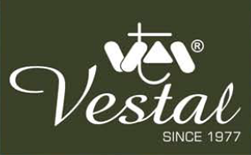Pin Cylinder vs. Mortise Locks: Which Offers Better Security for Your Space?

If you are building your home or office, you may prioritize the furniture, panels, and larger interior elements. But the selection of the right hardware is equally important. Locks, in particular, are one of the most significant hardware products that we can install in our premises. They not only ensure your property is secure, but their appearance also adds to the beauty of the entire interior theme. Today, we have a variety of locks available in the market. Mortise handles and pin cylinders are the most common designs that we come across. These locks are high-quality hardware products meant for security in different environments. In this blog, we are going to explore their differences to understand which among these is better for your space. Difference between Pin Cylinder & Mortise Locks At Vestal, we have a great variety of both these locks, with variations in their texture, finishes, and mechanisms. We are one of the top mortise door locks and handle manufacturers, and we use zinc alloy for ultimate strength and corrosion resistance. For pin cylindrical locks, we use solid brass and zinc in some variants. Both are high-quality hardware products with key differences that we are going to explore: Components Pin Cylinder: A pin cylinder lock consists of pins, a cylinder cam, springs, a housing shell, and a retractable latch. Its simple construction makes it easy to operate and rekey. Mortise Locks: More complex in design, mortise locks include a lock body, latch, deadbolt, faceplate, strike plate, and sometimes a cylinder. A handle is usually attached to the lock body. As a result, these locks are generally heavier than pin cylinder locks. Security Level Pin Cylinder: These provide a moderate level of security. Their resistance to picking and tampering depends on the pin configuration. They’re suitable for spaces requiring basic protection. Mortise Lock: With a more complex structure, mortise locks offer superior security. Because the lock body is embedded inside the door, they’re more tamper-resistant and durable. Mechanism Pin Cylinder: The mechanism is simple- a key-operated cylinder rotates when pins are aligned, which turns the latch or bolt to lock or unlock. Its straightforward construction makes it easy to operate and rekey, which is why it’s widely used in everyday applications. Mortise Lock: Its mechanism is more complex. A key or handle turns the lock to engage or disengage the latch or deadbolt. An integrated system of mechanical parts is used to control the entire locking mechanism. Due to this advanced structure, mortise door and handle locks manufacturers often focus on precision engineering and premium materials to ensure dependability and highly secure function. Applications Pin Cylinder: Ideal for interior spaces with moderate security needs and frequent access. Common uses include cabinet doors, drawers, and office doors. Mortise Locks: Preferred for high-security areas such as main entrances, fire-rated doors, luxury apartments, and museums—spaces with high foot traffic and security demands. Conclusion To sum up, pin cylinders are simple designs with a medium level of security, easy to install and can be accessed frequently with a key. On the other hand, mortise locks have a high-grade security system with higher durability, integrated latch & deadbolts, and high resistance to tampering; hence, these are used in entrance doors and high-risk areas. Both pin cylinder locks and mortise locks have their unique strengths. If you want to choose pin cylinder or mortise door locks and handle manufacturers, choose Vestal. We are known to deliver high-quality hardware products for our clients, and we can make standard locks as well as designer ones as requested.

